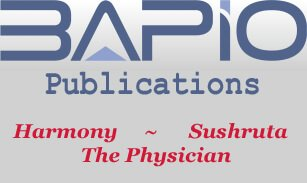FIRMST20_AB_55
EFFICIENCY OF SANITATION WITH OZONIZED SOLUTION AFTER LIVER ECHINOCOCCECTOMY
FIRMST20_AB_55
EFFICIENCY OF SANITATION WITH OZONIZED SOLUTION AFTER LIVER ECHINOCOCCECTOMY
Rasul Abakarovich KOICHUEV1, Lloyd Tadiwa KASHANGURA1, Khalid KOICHUEV1
1Dagestan State medical university, Makhachkala, Russian Federation
Aim:selecting optimal tactics for treatment of liver echinococcosis by clinical and experimental development, implementing method of using medicinal ozone for residual cavities (RC) treatment after echinococcectomy
Keywords: Echinococcectomy, residual cavity, fibrous capsule, ozone
Conflict of interests: No conflict of interest.
No conflict of interest declared
Article InformationDOI:
10.38192/1.6.3.firmst20.ab55Epub: 30.01.21Presented at FIRMST Conference, Moscow 2020Peer reviewed by JS Bamrah, Ananthakrishnan Raghuraman, Soumit DasguptaOpen Access- Creative Commons Licence CC-BY-ND-4.0
Introduction:
The search for more effective and less traumatic methods of treating liver echinococcosis (EN), development of surgical approaches depending on location of cysts and nature of lesion; relapse prevention; methods improvement for eliminating residual cavities; solving the problems of hemo- and cholestasis , reducing frequency of postoperative infectious and inflammatory complications.
Materials and Methods:
Study included patients who underwent organ-preserving surgeries for liver echinococcosis at Clinical Hospital of Makhachkala. Sampling was formed from patients in study. Had 233 patients who underwent surgical interventions for echinococcal cysts, sizes which exceeded 12 cm. Each surgical intervention was completed with drainage of RC. Echinococcectomy of liver with external drainage of RC without reducing volume was performed in 117 patients in sample. Assessment of the RC rehabilitation various methods effectiveness, dynamics of their reduction was carried out.
Research results: Episodes of state deterioration, expressed in appearance of pain in liver, increase in body temperature, sweating and appearance of leukocytosis in immediate postoperative period, were observed with decrease in volume of discharge from drainage. Washing residual cavity with antiseptics within 3 days, number of patients in first group, where seeding didn’t give growth, reached 8 (72.7%), in second group, seeding did not give growth only in 4 ( 25.0%) patients (χ2 = 4.24 p = 0.039). minimum volume of cavity, possibility of cutting sutures didn't allow introduction of sufficient amount of antiseptic solution under dosed pressure. possibility of due lavage of RC with antiseptic solutions in presence of drainage, and introduction of the method developed by us, based on use of medical ozone for its sanitation, ensures prevention of development of purulent complications of echinococcectomy.
Conclusion: effectiveness of sanitation with ozonated solution after echinococcectomy showed improvement in results, had an antihypoxic effect, manifested sorption properties, stimulated micro- and macrophage system of liver, proving high efficiency of using ozone for disinfecting germ elements of cystic echinococcus , preventing suppuration of residual cavities.
If you are interested in publishing your conference abstracts with us
If you are interested in publishing your conference abstracts with us
Please contac the editorial board for peer review and publication in the The Physician Journal of International Health



